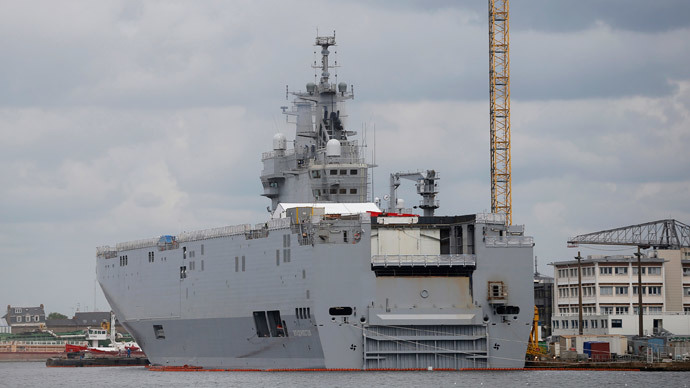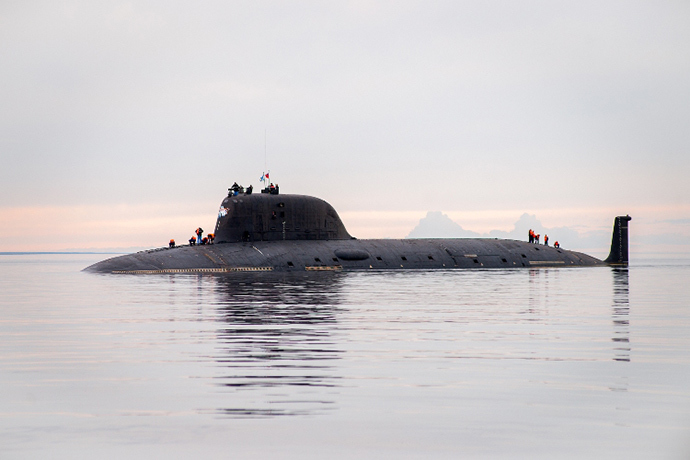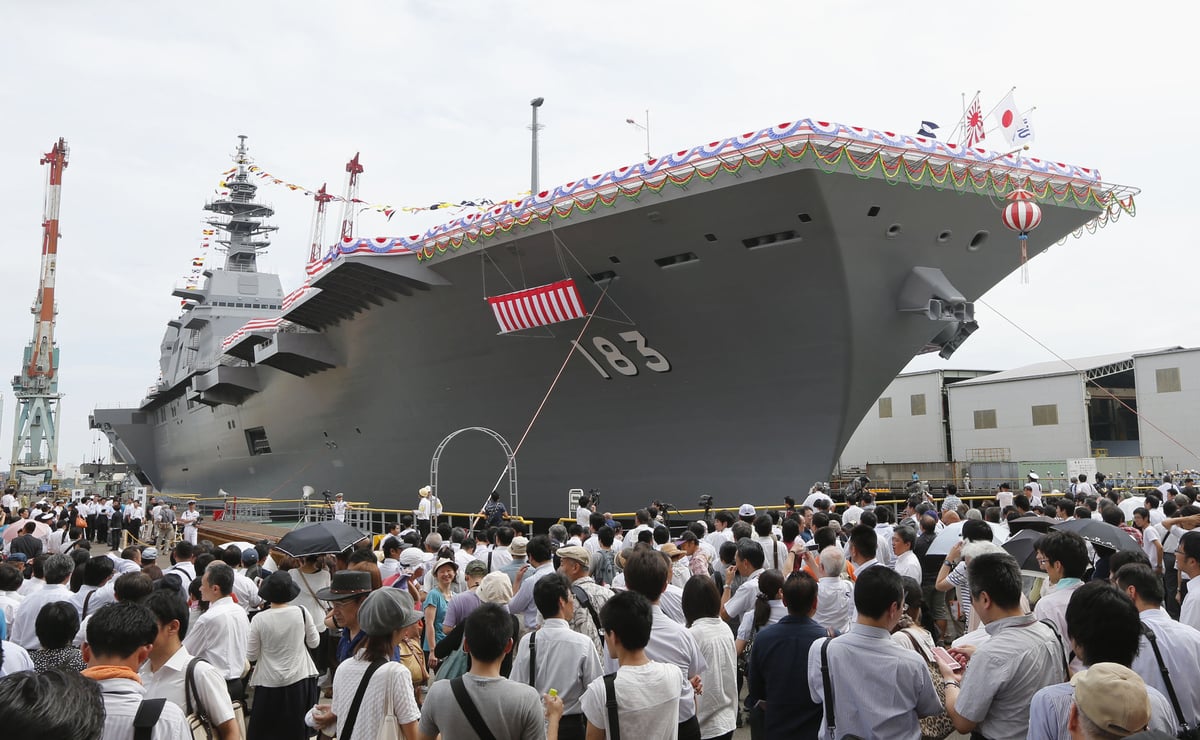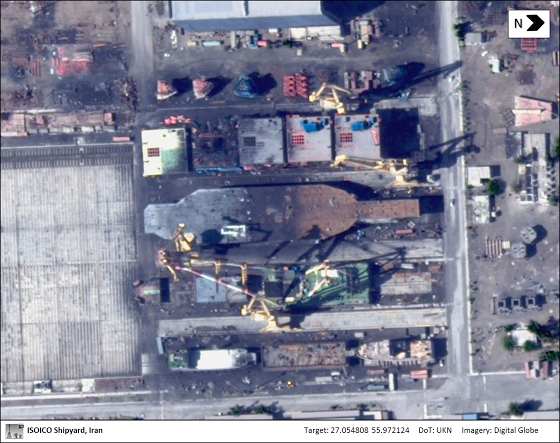USNI News polled its writers, naval analysts, and service members on what they consider the most important military and maritime stories in 2014.
Mistrals

The stalled delivery of two Mistral-class amphibious warships to Russia was arguably the biggest international shipbuilding story of the year.
The delay in the $1.56 billion deal for the two 21,000-ton ships is emblematic of economic fallout between Russia and the West since the forced annexation of Crimea by Russian forces.
In September, the government of French President François Hollande suspended the delivery of the two specially built ships — Vladivostok and Sevastopol — due to the ongoing civil unrest in eastern Ukraine.
Since the deal’s suspension Russian officials have said they will adhere to the contract and have reserved the right to sue for breach of contract.
In mid-December, the 400 Russian sailors assigned to crew Vladivostok departed the French port of Saint-Nazaire leaving the future of the program in limbo.
Russian Submarines

Russia has moved ahead with recapitalizing its submarine forces with new nuclear attack (SSN) and ballistic missile submarines (SSBN).
In June, Russia accepted its first Project 855 Yasen-class nuclear-powered attack submarine — K-560 Severodvinsk.
The 13,800-ton boat has been under construction since 1993 and had been undergoing sea trials since 2011. Three boats are currently under construction of a planned class of eight or more.
The highly automated design — the boat is crewed by 90 sailors compared to 132 of the 7,800-ton U.S. Virginia-class — has drawn praise from U.S. Navy officials.
“I am so impressed with this ship that I had Carderock build a model from unclassified data,” Rear Adm. Dave Johnson, Naval Sea Systems Command’s (NAVSEA) program executive officer (PEO) submarines said in October.

On the SSBN front, the Russians have accepted three 19,400-ton Borei-class submarines — the most recent in December.
The Borei boomers — capable of launching 16 nuclear tipped Bulava submarine launched ballistic missiles (SLBMs) — will replace Project 941 Typhoon-class and Project 667BDRM Delta IV-class SSBNs.
Australian Defense Minister’s ‘Canoe’ Builder Slight

Ongoing cost and schedule problems with the construction of the Royal Australian Navy’s three Hobart-class of destroyers caused Defense Minister David Johnston to snap at shipbuilder ASC in November before the Australian Senate.
“You wonder why I’m worried about ASC and wonder what they’re delivering the Australian taxpayer? You wonder why I wouldn’t trust them to build a canoe?,” Johnston said before the Australian Senate in a moment of pique.
He quickly walked back the burn but the comments highlight the persistent problems in the Aegis equipped guided missile destroyer.
According to November press reports, the $7.56 billion program is about $683.28 over budget and costs are rising.
Debate in Australia also continues over ASC’s level of involvement with the Collins-class diesel electric submarine (SSK) replacement program. Japan’s Soryu-class SSK is said to be the front-runner.
Largest Japanese Ship Since World War II Goes to Sea

The largest warship Japan has built since World War II — JS Izumo (DDH-183) — began sea trials in September.
The 24,000-ton JS Izumo (DDH-183) is the first of two-planned helicopter carriers Japan has said will be used for anti-submarine warfare (ASW) and humanitarian and disaster relief (HADR).
However the character of the ship is more in line with U.S. amphibious warships.
The ship can field 14 helicopters and has the capacity to carry 400 troops. It could also conceivably field a short takeoff vertical landing (STOVL) fighter — like the U.S. Marine variant of a F-35 Lighting II Joint Strike Fighter (JSF).
Japan says it has no intentions of using F-35s on the ship.
Chinese Destroyers

While Chinese shipbuilding news inevitably focuses on its budding carrier force, the People’s Liberation Army Navy (PLAN) commissioned the first of a new class of guided missile destroyer that mimics western warships in March.
The new 7,500-ton Kunming (hull number 172) is the first of a planned class of 12 Luyang III destroyers that feature an improved AESA radar and an advanced vertical launch system (VLS) system that could field better missiles and could eventually include land attack missiles, according to an assessment from the U.S. Office of Naval Intelligence (ONI).
“The addition of these newer units allows the [PLAN’s] surface force to operate with increased confidence outside of shore-based air defense systems, as one or two ships can now provide air defense for the entire task group,” read the assessment.
ONI said the PLAN’s rapid development used, “a combination of imported technology, reverse engineering, and indigenous development,” and that, “[China] has rapidly narrowed the technology and capability gap between itself and the world’s modern navies.”
Iranian ‘Carrier’

The Iranian military said the barge was going to be used as a target.
“We should learn about weaknesses and strengths of our enemy,” said Islamic Revolutionary Guard Corps naval head Adm. Ali Fadavi in the Haft-e Sobh newspaper.
He said IRGC should, “target the carrier in the trainings, after it is completed.”
The move perplexed U.S. forces in the Middle East.
“Whatever Iran hopes to do with the mock up, it is likely to have zero impact on U.S. Navy Operations in the Gulf,” a U.S. Navy 5th Fleet spokesman told USNI News in April.
“Firing weapons at a stationary steel structure floating on pontoons is not a realistic representation of being able to target a 100,000 ton ship maneuvering at speeds in excess of 30 knots.”





